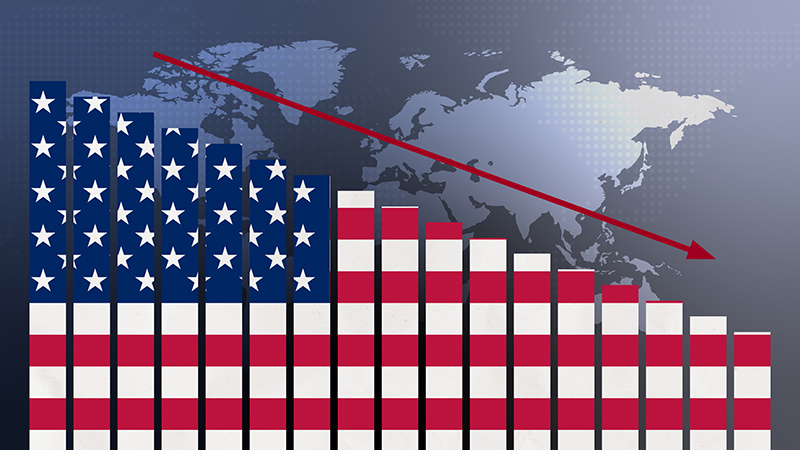Inflation is a stealth tax that could be likened to a pub fight – you’re enjoying a pint and suddenly someone hits you over the head with a chair – it’s completely unwelcome, unexpected and you don’t know it’s happening until it strikes.
When it comes to inflation, central banks tend to target 2% but after the roller coaster ride of the last few years, inflation has taken hold and its grip is only getting stronger, write RSMR’s client engagement and marketing manager, Katie Poulson, and head of research, Stuart Ryan.
Yorkshire puddings, vegan sausages and pet collars
So, where are we when it comes to inflation levels? In Germany, inflation is at 7.3%, the figure in Spain is 9.8%, and in the UK, we’re at 6.2%, the highest level in the last 30 years, but this is only a true representation if you’re buying the proposed basket recently released by the Office of National Statistics (ONS).
With Yorkshire puddings, meat-free sausages and pet collars now featuring in the mix and the removal of donuts, men’s suits and coal, the basket is a measure, but it isn’t applicable to everyone’s lifestyle.
If avocados are your thing, for example, you’re in for a shock as they’re at a 24-year high. Inflation is a global issue, but it has a personal element and the level that you experience is clearly dependent on the goods and services you choose to buy.
Shrinkflation is the practice of shrinking a product but maintaining the retail price to boost margins. It’s been used widely across snack brands to increase profits and to tackle levels of obesity, but manufacturers are now being forced into making the move because of soaring production costs.
Cadbury’s has recently reduced the size of their Dairy Milk bar by 10% but are charging the consumer the same price. And it isn’t just chocolate manufacturers that are heading down this road, there seems to be less sheets on a roll of toilet paper these days and when you open a packet of crisps, there seems to be more air than product.
The effect is that your cost of living stays the same but you’re not getting the same amount of goods and services, so your purchasing power is taking a nose-dive. Shrinkflation sits under the inflation umbrella, it’s just coming at us from a different angle.
Let’s go back to avocados
It’s not just your supermarket bill that could be causing palpitations. Have you been out for a bite to eat recently? You may have noticed that there’s been a significant increase in the price of your meal. With the cost of ingredients soaring due to supply chain constraints, fuel bills on the increase and overheads spinning out of control, it’s hardly surprising that the end consumer is feeling the brunt of the heady mix.
Let’s go back to our avocados – supply chain disruptions and other inflationary pressures related to the pandemic had already caused a record spike in prices and this trend has only intensified after the US temporarily banned imports from key supplier Mexico due to a threat against safety inspectors.
What is the true impact of inflation? Real inflation is hard to measure – the 6% figure in the UK is an estimate using the numbers that we know about, but the actual effect of inflation is yet to be seen. Energy tariffs and the crisis in Ukraine are bound to have a considerable effect on the figure as we move forward.
So, where does this leave investors? The culprit for the sharp decline in bond values is the rise in interest rates and inflation that has accelerated throughout fixed income markets in 2022. But inflation doesn’t just affect fixed income, it influences all asset classes; if your price is going down, your position in any fixed instrument is heading south, making the current environment a tricky one to navigate.
Equities, commodities and real assets
As an investor, it hasn’t been easy over the last few years with Brexit and Covid-19 to negotiate and the rocky road continues with inflation coming at us from all angles. How can you protect yourself?
It’s not all doom and gloom – equities should benefit from an inflationary environment, with a focus on companies that can pass on the price increase to their consumers such as major, established brands.

Commodities have performed well over the past year, as have inflation-linked bonds, infrastructure, and property. Real assets tend to appreciate in inflationary environments which is reflected in the UK house prices that have grown at the fastest rate in the last 17 years and gold can be a solid addition to a portfolio in times of high inflation as, effectively, everything else devalues against it. Basically, it’s about doing your homework and riding the wave.
UK credit card debt has already hit a record high as inflation and living costs bite but what will happen when people start to see the true extent of inflation and the knock-on effect it has on their disposable income?

The household budget may be squeezed to a point where there’s no spending money left in the pot meaning fewer nights out, spelling bad news for the consumer and businesses who have battled through lockdowns to keep themselves afloat over the last two years.
When your household budget is seriously pinched and your investments are also taking a hit, it’s time to look at your long-term strategy and preferences. Inflation doesn’t just affect the short-term, surging living costs and investments not delivering expected returns are forcing people to work into their retirement.
Stellar returns may not be on the table in this challenging environment, but keen evaluation, a long-term approach and a focus on diversification can provide you with a safe and potentially profitable haven to ride out the storm.
This article was written for Portfolio Adviser by Katie Poulson, client engagement and marketing manager, and Stuart Ryan, head of research at fund research firm RSMR.











